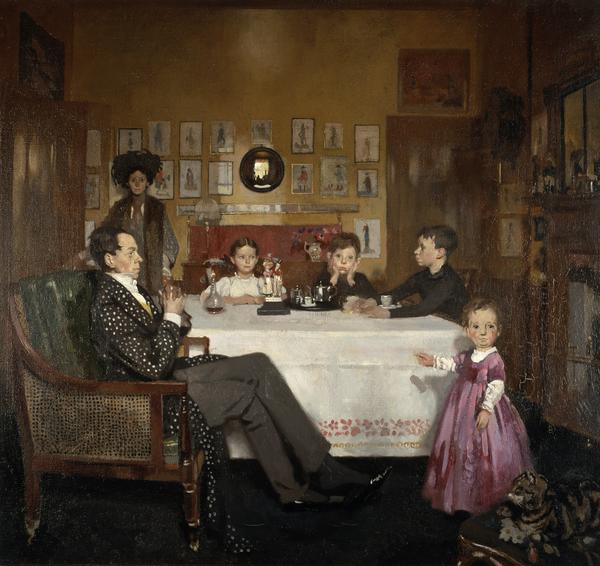David Beatty, 1st Earl Beatty (1871-1936)
About this artwork
As a young man David Beatty pursued an extremely swift and successful career in the British Navy. In 1910 he became the youngest admiral since Nelson, and was made commander-in-chief of the Grand Fleet during the crucial years of the First World War. The Armistice and the collapse of Germany robbed him, he believed, of the 'glorious achievement' he had expected - the destruction of the German High Sea Fleet. Both Beatty and his wife thought the portrait was a bad likeness. Beatty even offered to sit again for William Orpen to correct the painting, but this idea was firmly resisted. Orpen himself, however, admitted to being a little colour blind – he saw red as pink and tried to correct this in his pictures, but was still criticised for making his sitters look too ruddy.
Updated before 2020
-
artist:Sir William Orpen (1878 - 1931) Irish
-
title:David Beatty, 1st Earl Beatty (1871-1936)
-
date created:1919
-
materials:Oil on canvas
-
measurements:76.20 x 63.50 cm; Framed: 87.50 x 75.00 x 3.50 cm
-
object type:
-
credit line:Purchased 1926
-
accession number:PG 1036
-
gallery:
-
depicted:
-
subject:
Sir William Orpen
Sir William Orpen
Orpen was born in Blackrock, near Dublin. He studied at the Metropolitan School of Art in Dublin from his early teens before moving to London in 1897. Orpen subsequently studied at the Slade School of Fine Art for two years, where he became friends with the artist Augustus John. He later went on to become one of the most successful society portraitists of his day, commanding huge sums of money for his work. In 1917 Orpen worked as an Official War Artist in France.









